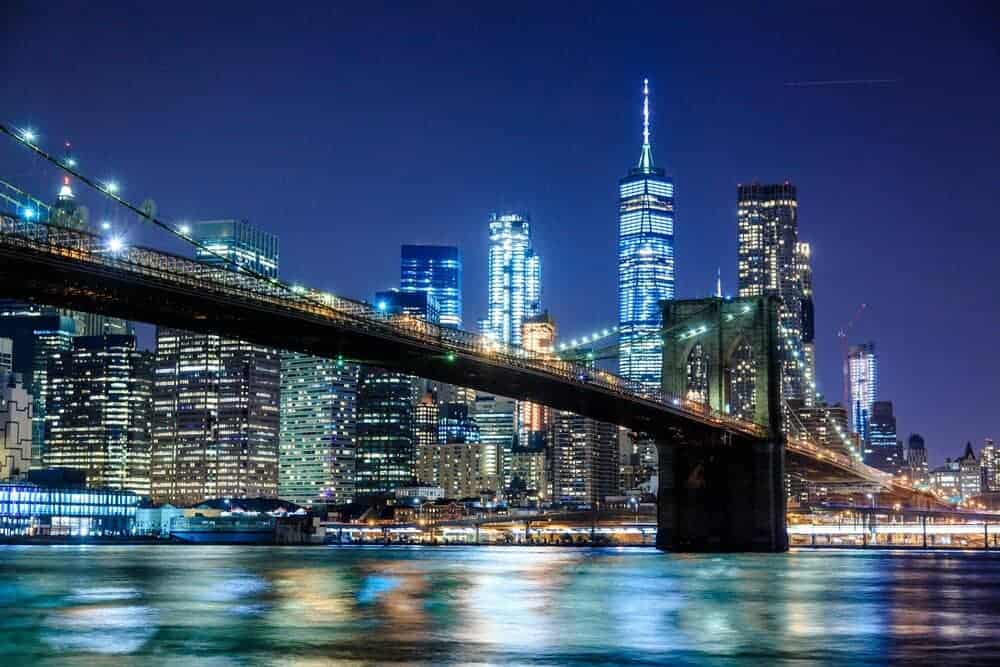# New York Calling: Top Destinations to Explore in the City That Never Sleeps
New York City, a bustling metropolis that serves as a beacon of culture, fashion, and life, beckons travellers to discover its myriad delights. Known as the “City That Never Sleeps,” New York offers endless opportunities for exploration, from iconic landmarks and museums to diverse neighbourhoods and world-class dining. This guide will take you through the top destinations and experiences essential for any visitor to this vibrant city.
History of the Destination
New York City’s rich history dates back to 1624, with its founding as a small Dutch settlement called New Amsterdam on Manhattan Island. It was later renamed New York when it came under English control. The city played a pivotal role in various historical events, including serving as a major port during the American Revolution and later as a gateway for millions of immigrants arriving at Ellis Island.
Throughout the 19th and 20th centuries, New York emerged as a global hub for commerce, culture, and finance. The city’s architecture, from the historic buildings of Old New York to the towering skyscrapers that define its famous skyline, tells the story of a rich and dynamic history that continues to evolve to this day.
Information on the Location
New York City is located in the northeastern United States, at the mouth of the Hudson River. It is made up of five boroughs: Manhattan, Brooklyn, Queens, The Bronx, and Staten Island, each with its own distinct identity and attractions. The city is known for its incredible skyline, bustling streets, and diverse population, contributing to its reputation as one of the world’s most vibrant urban centres.
Best Time of the Year to Visit
The best time to visit New York City largely depends on personal preferences and interests:
- Spring (March to May): The city bursts into bloom, with mild weather and fewer tourists than summer. It’s a great time for walking tours and visiting parks.
- Summer (June to August): While it can be hot and crowded, summer in New York is full of energy, with numerous outdoor concerts, festivals, and events.
- Autumn (September to November): Autumn brings pleasant weather and beautiful fall foliage, particularly in Central Park. It’s also a popular time for cultural events and festivals.
- Winter (December to February): Despite the cold, winter is magical in New York, especially with the Christmas decorations and New Year celebrations. It’s also a good time for shopping and enjoying indoor attractions like museums and Broadway shows.
Best Sites to Visit
New York City is home to an array of world-famous sites and landmarks:
- Statue of Liberty: A symbol of freedom and democracy, a visit to this iconic statue is a must for first-time visitors.
- Central Park: A sprawling green oasis in the middle of Manhattan, perfect for a relaxing stroll, boat ride, or picnic.
- Empire State Building: Offering panoramic views of the city from its observation decks, it’s an iconic symbol of New York’s skyline.
- Times Square: Known for its bright lights and bustling atmosphere, it’s a hub of entertainment and shopping.
- Brooklyn Bridge: A historic bridge offering stunning views of the Manhattan skyline, ideal for a scenic walk or bike ride.
- Museum of Modern Art (MoMA): Home to an impressive collection of modern and contemporary art, including works by Van Gogh, Dali, and Picasso.
- The Metropolitan Museum of Art: One of the world’s largest and finest art museums, with a vast collection spanning 5,000 years of culture.
- 9/11 Memorial & Museum: A poignant tribute to the lives lost in the terror attacks of September 11, 2001.
- Broadway: Experience the magic of live theatre with a Broadway show, a quintessential New York experience.
Best Excursions to Do
There’s more to explore beyond the immediate attractions of New York City:
- Hudson Valley: Just a short drive or train ride away, the Hudson Valley offers charming towns, vineyards, and beautiful countryside.
- The Hamptons: Known for its beautiful beaches, luxurious homes, and cultural scene, a trip to the Hamptons is perfect for a summer getaway.
- Niagara Falls: While it’s a bit farther, a visit to one of North America’s most famous natural wonders can be done on a long day trip or a comfortable weekend getaway.
- Washington D.C.: Accessible by a short train ride, a visit to the nation’s capital to see landmarks like the White House and the Smithsonian museums is highly recommended.
Best Food & Drink Places to Visit
New York City is a food lover’s paradise, offering everything from high-end dining to street food:
- Katz’s Delicatessen: Famous for its pastrami sandwiches, Katz’s is a quintessential New York deli experience.
- Le Bernardin: A Michelin-starred restaurant known for its exquisite seafood and refined dining experience.
- Chelsea Market: A food hall offering a variety of eateries and shops in a former biscuit factory.
- Smorgasburg: A weekend food market in Brooklyn featuring dozens of food vendors serving up a variety of street food treats.
- Eataly: A vibrant Italian market with restaurants, cafes, and a diverse array of gourmet Italian groceries.
Hidden Gems to Visit
New York is full of hidden gems waiting to be discovered:
- The High Line: A park built on a historic freight rail line elevated above the streets on Manhattan’s West Side, offering unique views and a peaceful retreat from the city bustle.
- The Cloisters: Located in Fort Tryon Park, this branch of the Metropolitan Museum of Art is dedicated to the art and architecture of medieval Europe.
- Greenwood Cemetery: A beautiful and historic cemetery in Brooklyn that offers guided tours and stunning views of the city.
- Governors Island: A 172-acre island in the heart of New York Harbor, open to the public during the summer months with recreational activities, art installations, and great views of the Lower Manhattan skyline.
Best Budget Hotels
New York City offers a range of budget-friendly hotels:
- Pod 51 Hotel: Located in Midtown Manhattan, this hotel offers compact, efficient rooms with modern amenities at a budget-friendly price.
- The Jane Hotel: A historic hotel in the West Village that offers small, cabin-like rooms with shared bathrooms at very reasonable rates.
- HI NYC Hostel: Located on the Upper West Side, this hostel offers dormitory-style rooms, private rooms, and a host of amenities including free Wi-Fi, making it ideal for young travellers and those on a tight budget.
Best Mid-Range Hotels
For those seeking a balance between affordability and luxury, there are several mid-range options in New York City:
- Hotel Giraffe: Located in NoMad, this hotel offers spacious rooms, a rooftop garden, and complimentary wine and cheese receptions in the evenings.
- The Pearl Hotel: Situated in the Theatre District, this hotel features comfortable rooms, a daily complimentary breakfast, and proximity to Broadway theatres.
- The Brooklyn: A boutique hotel located in Brooklyn, offering modern amenities and easy access to subway lines for exploring the city.
Best Boutique Hotels
New York City is known for its unique boutique hotels that offer a personalized experience:
- The Bowery Hotel: Located in the trendy East Village, this hotel offers luxurious accommodations, beautiful decor, and excellent service.
- Hotel Henry: A cultural icon and boutique hotel in the vibrant Chelsea neighbourhood, known for its contemporary art scene and historic architecture.
- The Greenwich Hotel: Owned by Robert De Niro, this Tribeca hotel offers bespoke luxury with a subtle homely touch, featuring an underground pool and a Japanese-inspired spa.
Best Luxury Hotels
For the ultimate in luxury and sophistication, consider staying at one of New York City’s top luxury hotels:
- The Plaza: A historic hotel at Central Park South, known for its luxurious rooms, impeccable service, and its famous afternoon tea service.
- The St. Regis New York: Located in Midtown Manhattan, this hotel offers elegant accommodations, personalized butler service, and a renowned King Cole Bar.
- The Peninsula New York: Known for its spa, rooftop terrace, and prime location on Fifth Avenue, this hotel offers refined elegance and style.
Best Transport Options
New York City’s extensive public transportation system is an efficient way to navigate the city:
- Subways and Buses: Operated by the Metropolitan Transportation Authority (MTA), New York’s subway and bus system runs 24/7, providing convenient and affordable options for getting around.
- Taxis and Ride-Sharing: Taxis are readily available throughout the city, and ride-sharing services like Uber and Lyft offer an easy alternative to public transport.
- Biking: With the expansion of bike lanes and the availability of the Citi Bike sharing program, biking is a viable option for short distances and a great way to see the city.
- Ferries: The NYC Ferry service provides a scenic way to travel between waterfront communities throughout the city and offers stunning skyline views.
Currency Information
The currency used in New York City is the United States Dollar (USD). Credit cards are widely accepted, and ATMs are readily available. It’s advisable to carry some cash for smaller purchases, especially in smaller establishments or street vendors.
Finding the Best Flights on TravelZine Flight Comparison Site
When planning your trip to New York City, finding the best flights is crucial:
- Check multiple airports: NYC is served by three major airports: JFK, LaGuardia, and Newark. Comparing flights to all three airports can help you find the best rates.
- Book in advance: For the best rates, try to book your flights to New York City several months in advance.
- Be flexible with your travel dates: Mid-week flights often offer lower fares than weekend flights. Being flexible with your travel dates can lead to significant savings.
- Set up alerts: Use TravelZine to set flight alerts that notify you when prices drop to your desired destination.
New York City offers an unparalleled blend of sights, sounds, and tastes. This vibrant city’s cultural richness and diversity make it a top destination for travellers from around the globe. Whether you’re visiting for the first time or returning to discover more, New York promises an exciting and memorable experience for everyone. With this comprehensive guide, you’re well-equipped to explore the best of New York City and enjoy everything it has to offer.


